Messel Pit Fossil Site
By Rachel Heller
What is Messel Pit Fossil Site?
Messel Pit Fossil Site came into being 48 million years ago during the Eocene Era, when a volcano erupted here and caused a huge pit to form. That pit filled with water, forming a large lake. The lake, over time, became a habitat for many plants and animals.
In modern times (starting with the Romans but mostly in the 19th and 20th centuries), the pit was an oil shale mine, but that oil shale held lots of fossils of the early plants and animals that lived here. After the pit was abandoned in the late 1960s, people prospected for fossils to sell. When the local state government of Hesse wanted to take the abandoned mine in 1971 and convert it into a garbage dump, local opposition succeeded in having it preserved because of the many fossils found there and the potential to find many more.
Today it has a small visitor’s center, but the primary purpose of the site is the ongoing scientific research carried out within the pit.
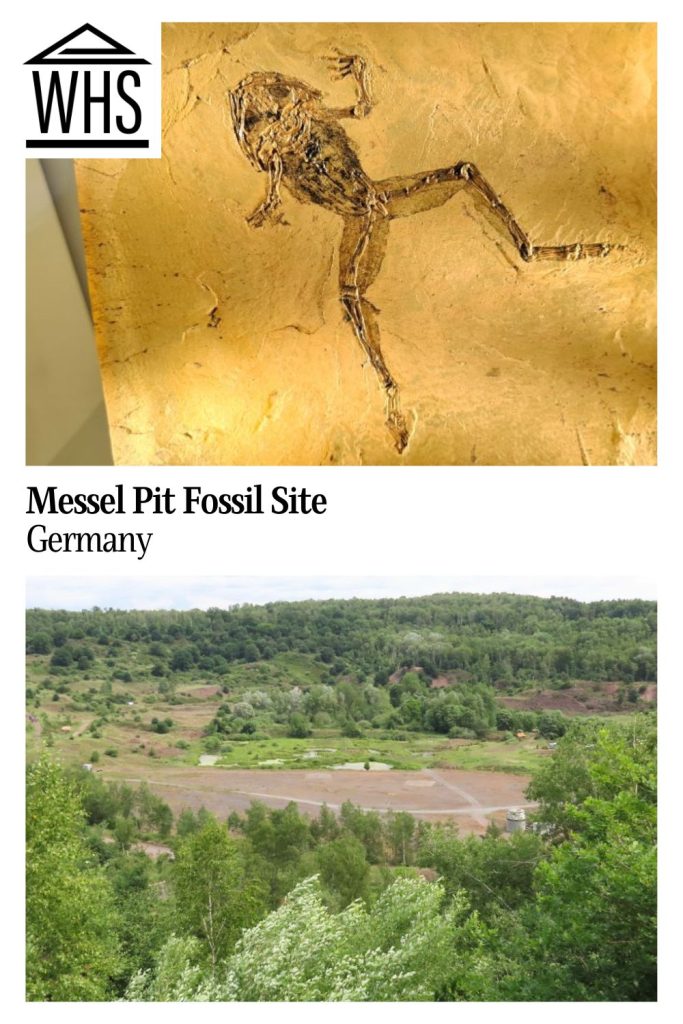
Disclosure: This article contains affiliate links. Making a purchase through an affiliate link will mean a small commission for this website. This will not affect your price. Privacy policy.
Why is the Messel Pit a UNESCO World Heritage site?
The fossils of over a thousand species of plants and animals are why this site is important enough to become a UNESCO site. The fossils still being found here offer important information about a 47-million-year-old ecosystem and especially about evolution. According to UNESCO, “Significant scientific discoveries include studies of the evolution of echolocation in exceptionally well-preserved fossil bats and vital new data on the evolution of primates, birds and insects.”
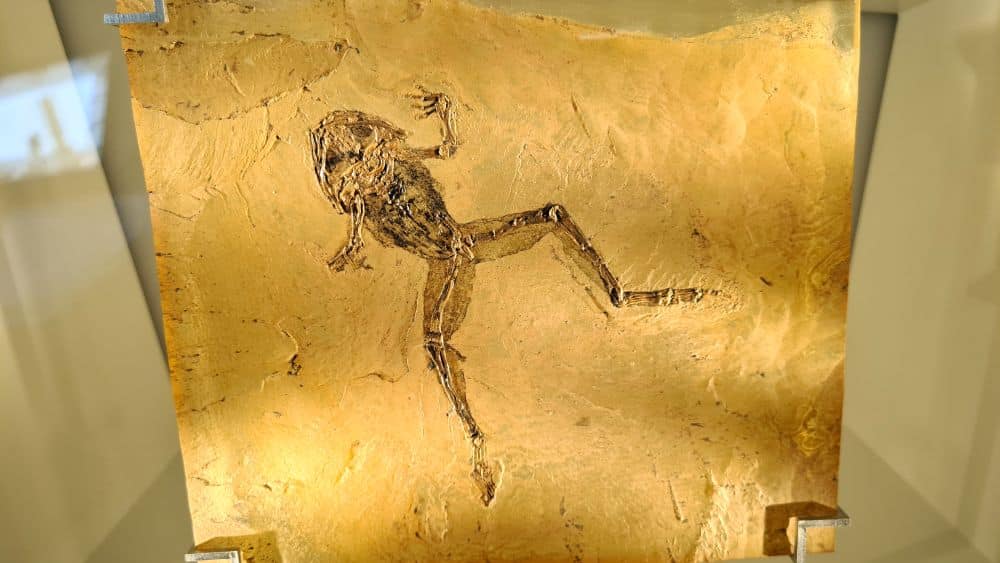
In particular, the fossils of early mammals are very well-preserved, including entire skeletons, skin, hair and stomach contents. UNESCO says that “Messel Pit Fossil Site is considered to be the single best site which contributes to the understanding of the Eocene, when mammals became firmly established in all principal land ecosystems.”
What can you expect on a visit to Messel Pit?
Messel Pit’s Visitor’s Center is a small museum that covers both the geology and the natural history of the site. There’s a section on volcanoes that shows how this volcano – called a maar volcano – formed and erupted. A simulated descent into a deep borehole in the pit explains the makeup of the rock layers below the pit. The geology of oil shale and how it was mined also gets some attention.
The biology exhibits explain the Eocene, as illustrated by the fossils that have been found here. There are many fossils on display of plants and animals, with special attention given to the fossils of horses from the site that demonstrate the principles of evolution.
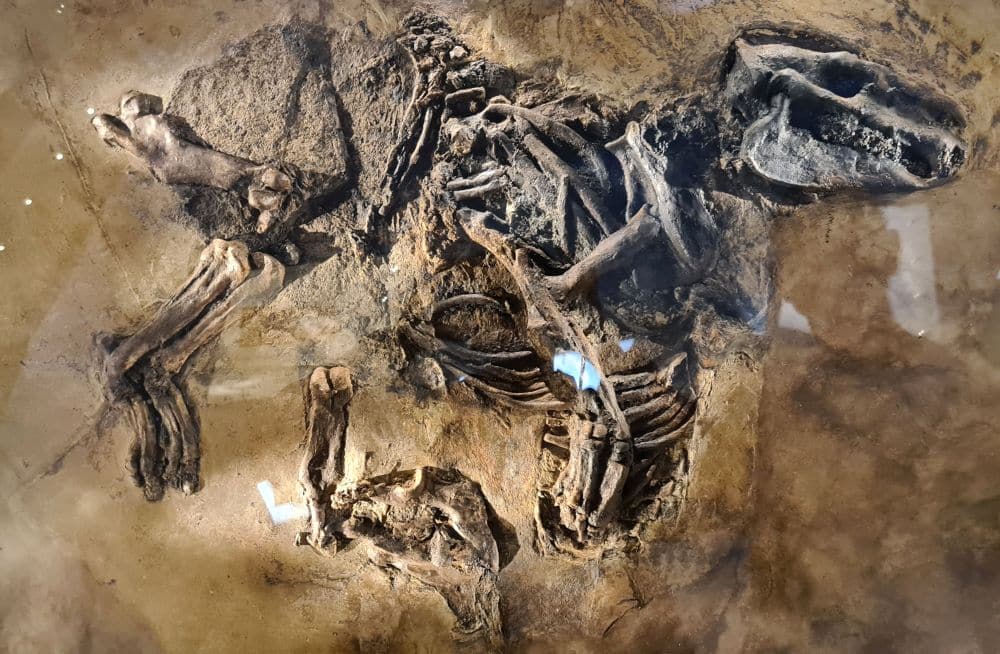
Once you’ve finished poring over the displays indoors, you can go outside to a viewpoint over the pit. It’s not very deep, but it’s certainly large. From the viewpoint you can spot a few small tents or cabins that are locations where research and excavations are underway.
The Visitor’s Center offers tours into the pit as well – you are not allowed to venture into the pit on your own.
Is Messel Pit Fossil Site worth visiting?
That depends. For me, it wasn’t very interesting, but if you’re into fossils, you’d love this place. And the displays are quite pretty.
Kids might very well like the exhibits in the Visitor’s Center, if they’re into biology in general or dinosaurs. (Though there are no dinosaur fossils to see here. The asteroid strike that wiped them out was even longer ago: 66 million years.)
Unless fossils are your particular interest, don’t go out of your way to visit Messel Pit. If it’s on your way, as it was for us, you might as well stop by.
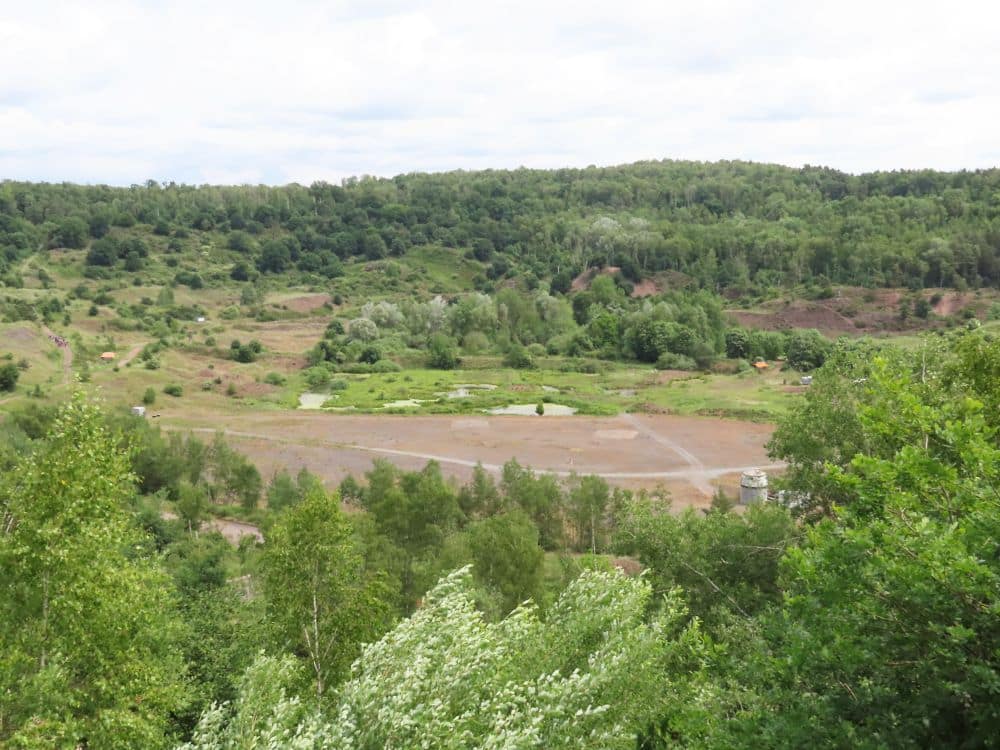
Tips for visiting Messel Pit
If you think you might take a tour, wear good walking shoes, and bring an umbrella if there’s any chance of rain. Without the tour, the Visitor’s Center will take about an hour to see. The Visitor’s Center is only partly wheelchair-friendly.
The simulated descent takes place in a round room with projections on the walls as you sit at the side of the room. The downward “movement” goes very fast, then slows when it points out a change in the geology of the shaft. As a photo-sensitive person (Flashing lights can trigger my migraines.), I had to close my eyes for the fast parts. If you are photo-sensitive, skip that room.
Book accommodations in Darmstadt or in Messel.
If you’re in the Darmstadt area, you can easily combine Messel Pit with a visit to Mathildenhöhe Darmstadt, another World Heritage site. Other UNESCO sites in the vicinity include the Carolingian-era Abbey and Altenmünster of Lorsch and the Upper Middle Rhine Valley with its many castles. If you’re heading west toward Luxembourg, make sure to stop at Trier before the border to see the Roman sights there. The nearest part of the Great Spa Towns of Europe site is beautiful Bad Ems.
The easiest way to see all of the nearby sights is by car. Compare rental car prices here.
For the fossil fanatics, two other places nearby have many more. The first is the Das Hessische Landesmuseum Darmstadt, a natural history museum in Darmstadt. They have many fossils from the Messel Pit in their collection, and also the more usual exhibits of things like dinosaur bones. There’s also the Fossilien & Heimatmuseum in the village of Messel, which combines a fossil museum with a local town history museum (only open weekends).
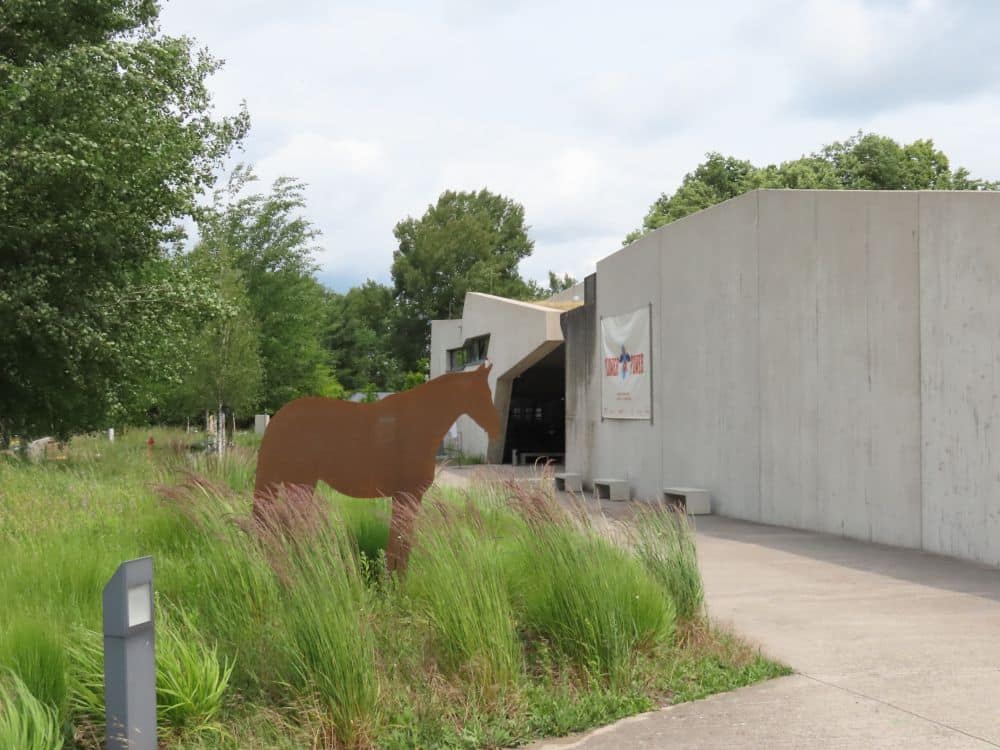
Where is Messel Pit Fossil Site?
The address is Roßdörfer Str. 108, Messel, Germany.
By car: The pit is on the outskirts of the town of Messel and about a 15-minute drive from the bigger town of Darmstadt. Frankfurt is about a 45-minute drive north of the pit.
By public transportation: From Frankfurt, take a train to Darmstadt (40 minutes) and then another train to the town of Messel (15 minutes). From there, it’s about a 25-minute walk to the pit. The whole trip will take about 1.5-2 hours, depending on which trains you take.
For more information about Messel Pit Fossil Site, its opening hours and admission fees, see its official website (in German only – use a translator app).
Have you been to Messel Pit Fossil Site? If so, do you have any additional information or advice about this UNESCO World Heritage site? Please add your comments below!

